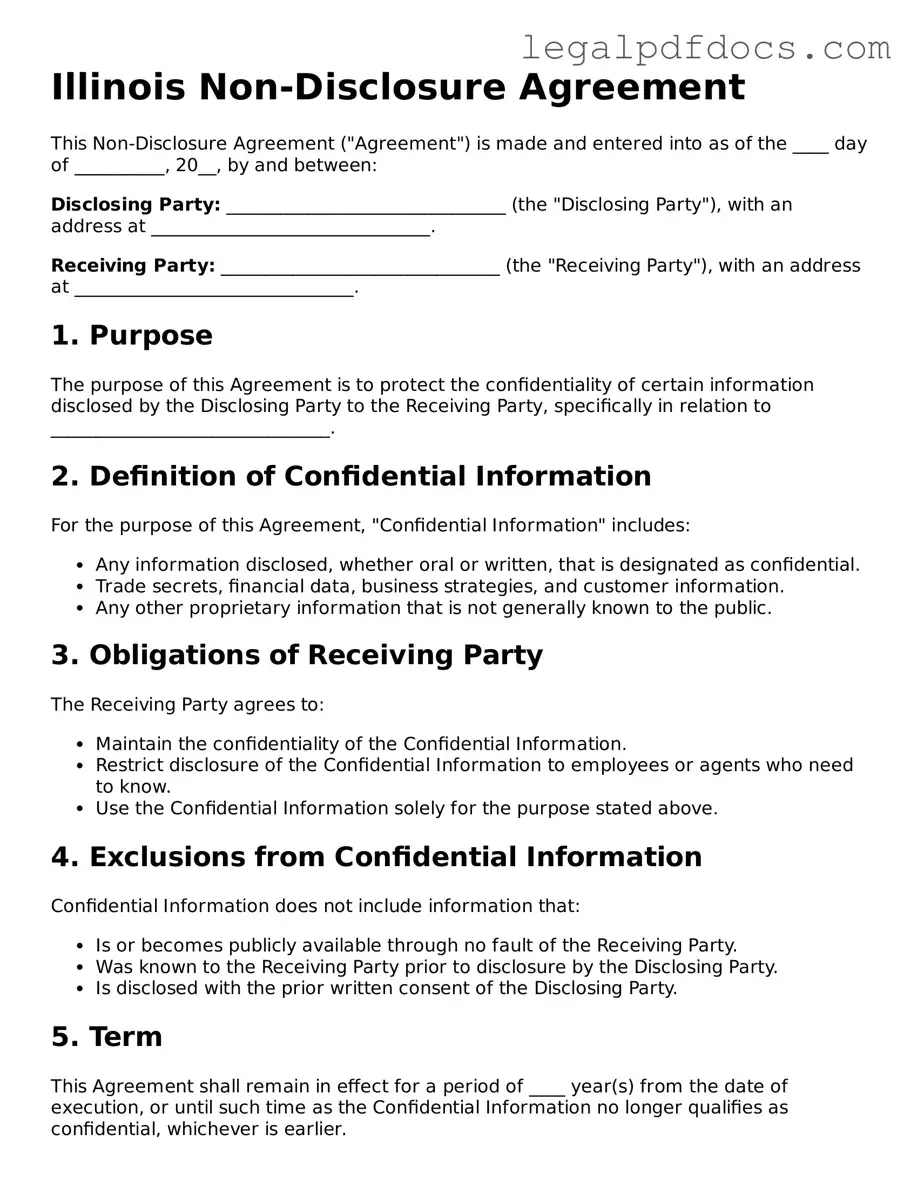Official Non-disclosure Agreement Form for Illinois
A Non-disclosure Agreement (NDA) in Illinois is a legal document that helps protect confidential information shared between parties. By outlining the terms under which sensitive information can be disclosed, this form plays a crucial role in safeguarding business secrets and personal data. Ready to protect your information? Fill out the form by clicking the button below.
Open Non-disclosure Agreement Editor Here
